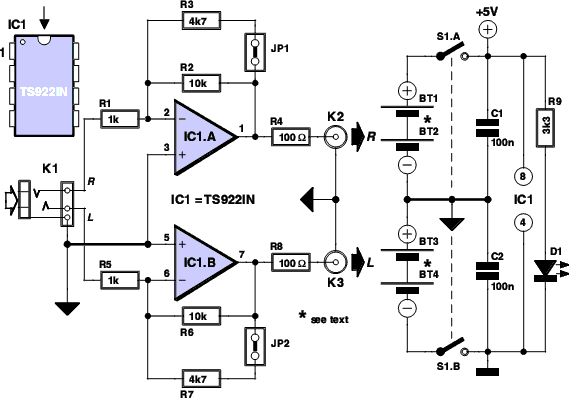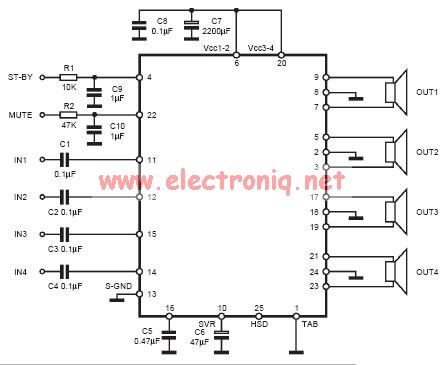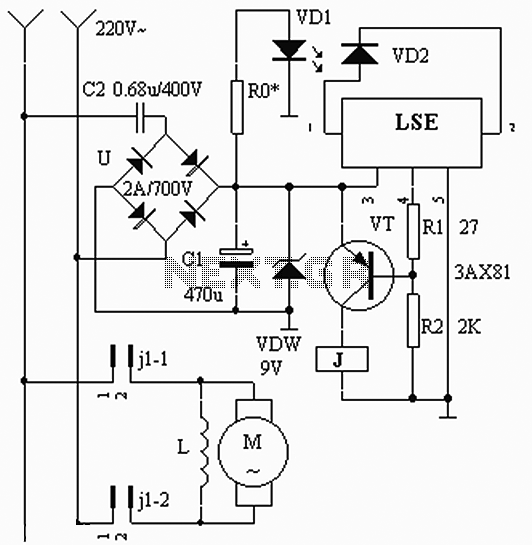
Boost has a frequency characteristic of automatic offset MAX630 power conversion
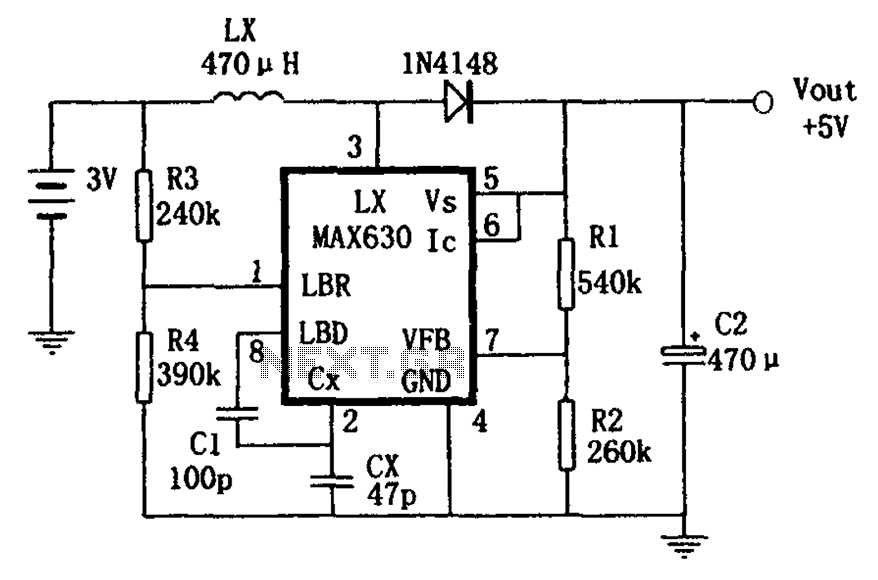
A low voltage frequency circuit utilizes the MAX630 for low battery voltage detection, functioning as an offset boost converter power supply. It is designed to maintain high efficiency (85%) while providing a DC output voltage of 5V at a current of 40mA, even when the battery voltage drops below the nominal value of 3V, down to as low as 2V. As the battery voltage decreases, the voltage at pin 1 of the MAX630 (determined by a voltage divider consisting of resistors R3 and R4) also decreases. When this voltage falls below the threshold voltage of the battery voltage detection comparator (1.31V), the detection output pin (LBD) goes low (ground). This triggers a connection between capacitors C1 and Cx, which reduces the internal oscillator frequency of the MAX630. The reduction in frequency increases output power to compensate for the decline in battery voltage, thereby maintaining a constant output power.
The described circuit employs the MAX630 integrated circuit, which is specifically designed for low battery detection and boost conversion applications. In this configuration, the resistors R3 and R4 form a voltage divider that continuously monitors the battery voltage. The output from this divider is fed to pin 1 of the MAX630. When the battery voltage falls below the predetermined threshold, the LBD output signal transitions to a low state, indicating a low battery condition.
Upon detection of this low voltage condition, the internal circuitry of the MAX630 responds by connecting capacitors C1 and Cx. This connection is critical as it alters the operational frequency of the internal oscillator. By reducing the oscillator frequency, the circuit compensates for the reduced battery voltage by increasing the output power, thus ensuring that the output voltage remains stable at 5V despite the decline in input voltage.
The overall design emphasizes efficiency and reliability in low voltage conditions, making it suitable for battery-operated devices where maintaining a consistent output voltage is essential. The use of the MAX630 allows for effective power management, ensuring that devices can operate reliably even as their power source depletes. This circuit is particularly beneficial in applications where battery longevity is crucial, as it adapts to changing voltage levels to sustain performance. As shown is a low voltage frequency use MAX630 low battery voltage detection function constitutes offset boost converter power supply. It features when the battery voltage is b elow the nominal value (3V) a lot of time (down to 2V), still at the output high efficiency (85%) to provide a DC voltage 40mA, 5V of. The process is the decline in battery voltage, causing MAX630 1 pin voltage (by R3 and R4 for dividing the battery voltage obtained) also dropped, the current drops below the battery voltage detection comparator threshold voltage (1.31V), the detection output end ( feet) LBD goes low (ground), the C1 and Cx and connected together, thereby reducing the MAX630 internal oscillator frequency.
Increase the output power to compensate for the decrease in the output voltage of the battery power shortage, keeping the output power constant.
The described circuit employs the MAX630 integrated circuit, which is specifically designed for low battery detection and boost conversion applications. In this configuration, the resistors R3 and R4 form a voltage divider that continuously monitors the battery voltage. The output from this divider is fed to pin 1 of the MAX630. When the battery voltage falls below the predetermined threshold, the LBD output signal transitions to a low state, indicating a low battery condition.
Upon detection of this low voltage condition, the internal circuitry of the MAX630 responds by connecting capacitors C1 and Cx. This connection is critical as it alters the operational frequency of the internal oscillator. By reducing the oscillator frequency, the circuit compensates for the reduced battery voltage by increasing the output power, thus ensuring that the output voltage remains stable at 5V despite the decline in input voltage.
The overall design emphasizes efficiency and reliability in low voltage conditions, making it suitable for battery-operated devices where maintaining a consistent output voltage is essential. The use of the MAX630 allows for effective power management, ensuring that devices can operate reliably even as their power source depletes. This circuit is particularly beneficial in applications where battery longevity is crucial, as it adapts to changing voltage levels to sustain performance. As shown is a low voltage frequency use MAX630 low battery voltage detection function constitutes offset boost converter power supply. It features when the battery voltage is b elow the nominal value (3V) a lot of time (down to 2V), still at the output high efficiency (85%) to provide a DC voltage 40mA, 5V of. The process is the decline in battery voltage, causing MAX630 1 pin voltage (by R3 and R4 for dividing the battery voltage obtained) also dropped, the current drops below the battery voltage detection comparator threshold voltage (1.31V), the detection output end ( feet) LBD goes low (ground), the C1 and Cx and connected together, thereby reducing the MAX630 internal oscillator frequency.
Increase the output power to compensate for the decrease in the output voltage of the battery power shortage, keeping the output power constant.
Warning: include(partials/cookie-banner.php): Failed to open stream: Permission denied in /var/www/html/nextgr/view-circuit.php on line 713
Warning: include(): Failed opening 'partials/cookie-banner.php' for inclusion (include_path='.:/usr/share/php') in /var/www/html/nextgr/view-circuit.php on line 713
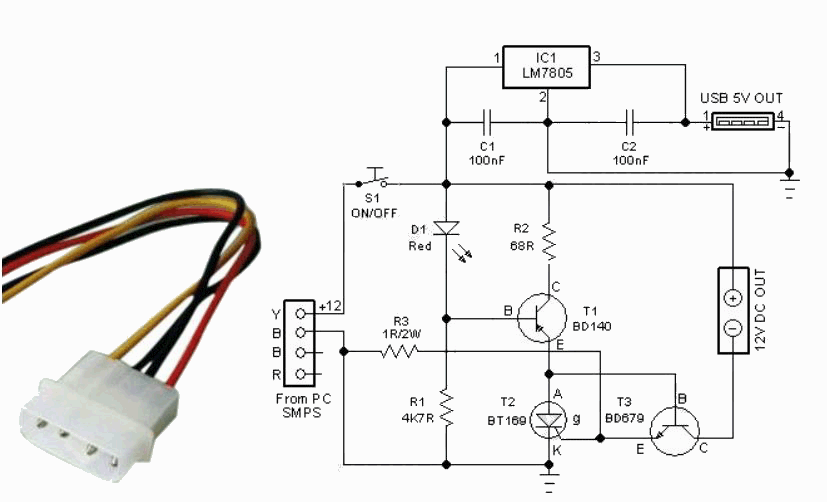
%2Bdecoder%2BCircuit%2Bschematic%2Busing%2BM8870.png)
